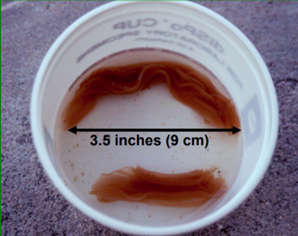MMN September 2023 – Rumen Audits: Maximising Livestock Health and Performance
11 September 2023Introduction
Feeding the dairy cow equates to around 51% of the total cost of milk production (Teagasc, 2023). Therefore, maintaining good rumen health is vital to ensuring optimum feed utilisation and greater profit margins. A better functioning rumen will be able to extract more nutrients from feeds which will contribute towards greater milk output, better milk quality, fertility, and overall health. Rumen audits are used to assess the functionality and condition of the rumen, allowing for management and dietary changes to be implemented where necessary to maintain high levels of performance. This can be particularly useful when transitioning from summer grazing to winter diets or vice versa.
Purpose of Rumen Audits
Rumen audits serve several important purposes which include:
- Health monitoring: Rumen function has a direct impact on cow health. Poor rumen function can increase the risk poor reproductive performance, acidosis, metabolic disorders and even lameness. By regularly conducting rumen audits, farmers can identify potential problems early and intervene promptly, minimising the risk of more severe health complications.
- Assessing feed efficiency: A properly functioning rumen is essential for optimum feed utilisation. Maintaining a stable environment within the rumen will enable microbes to break down feeds more efficiently, allowing for greater absorption of nutrients. Identifying any imbalances or deficiencies can allow for informed decisions about diet formulations.
- Optimising herd productivity: By regularly assessing rumen function, and implementing changes accordingly, farmers can help maximise milk production and improve milk quality from fewer inputs, leading to greater profitability.
Conducting Rumen Audits
Rumen audits use a combination of physical assessments to determine overall rumen functionality. These include:
- General condition of the cows: Assessing body condition, rumen fill, and cow cleanliness can give a good indication of rumen health. Measuring rumen fill can give an indication of dry matter intakes. Fresh or high-yielding cows with a poor rumen fill score are more prone to metabolic problems caused by negative energy balance.
- Rumination: Cows spend on average one-third of their time processing partially digested, regurgitated food. Counting cud chews gives an indication of rumen health - ideally over 55 chews per cud should be observed in healthy cows. Also, at least 6 out of 10 cows that are lying down should be ruminating and fewer than this could suggest dietary problems such as insufficient fibre.
- Feed sorting: Cows have a tendency to sift through the ration in search of more palatable, energy-dense components. However, consuming large amounts of rapidly fermenting carbohydrates can lower rumen pH and lead to sub-acute ruminal acidosis (SARA). Assessing the composition of the ration left behind in the feed trough could indicate how well the diet has been mixed/presented. If the refusals look very different to the freshly mixed ration, then a degree of sorting has taken place. The addition of water to the mix can help reduce sorting behaviour and also improve intakes.
- Manure consistency: The ideal consistency of manure will resemble a thick porridge and form piles that stand 2-3cm in depth. Thin, watery manure or stiff, hard manure can indicate nutritional imbalances or disease. Manure that appears bubbly/foamy is typical of cows with acidosis.
- Mucin casts: When damage occurs in the lining of the intestine (usually due to acidosis), a substance called mucin is produced to protect the damaged area (see photo below).
A mucin cast rinsed under water

Mucin is later shed from the gut and will appear in the faeces. The appearance of mucin casts is an indication of abnormal damage to the gut.
6. Manure composition: Manure is sieved under running water to reveal the level of undigested fibrous material and grains. Larger amounts of undigested forage and grains would suggest accelerated feed passage through the rumen, meaning less feed is broken down and more nutrients are wasted.
In conclusion, rumen audits use a combination of physical assessments to determine the digestive health of the dairy herd. Regularly monitoring rumen function and responding to changes in rumen health will help sustain high levels of herd health, feed utilisation and milk output resulting in better profitability.
marcus.fox@sac.co.uk; 01539, 889990
Sign up to the FAS newsletter
Receive updates on news, events and publications from Scotland’s Farm Advisory Service

